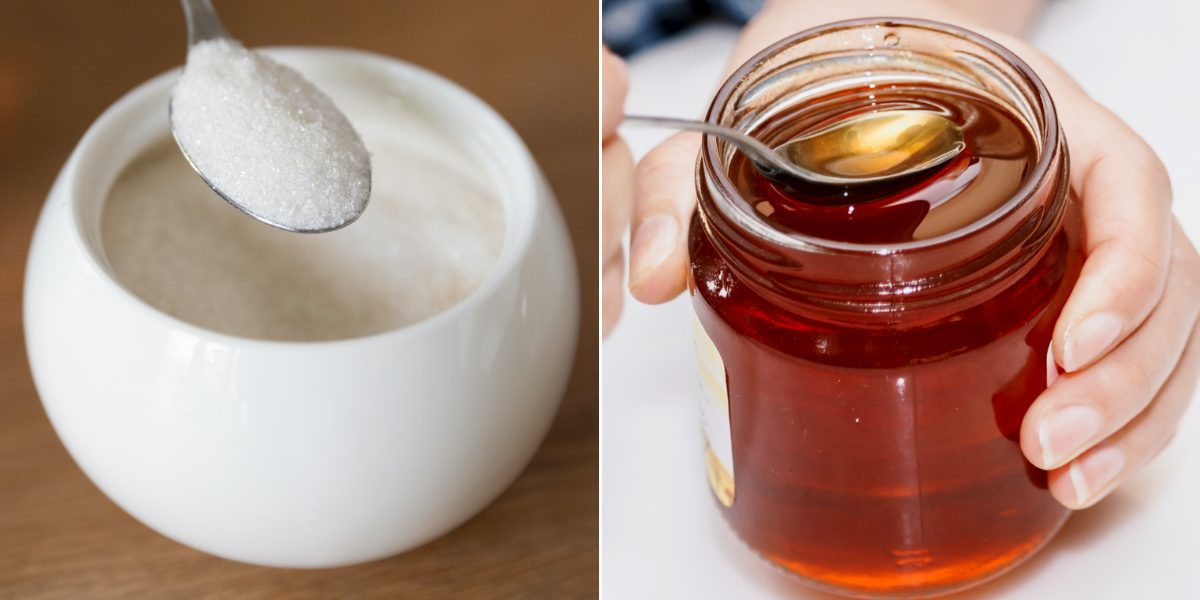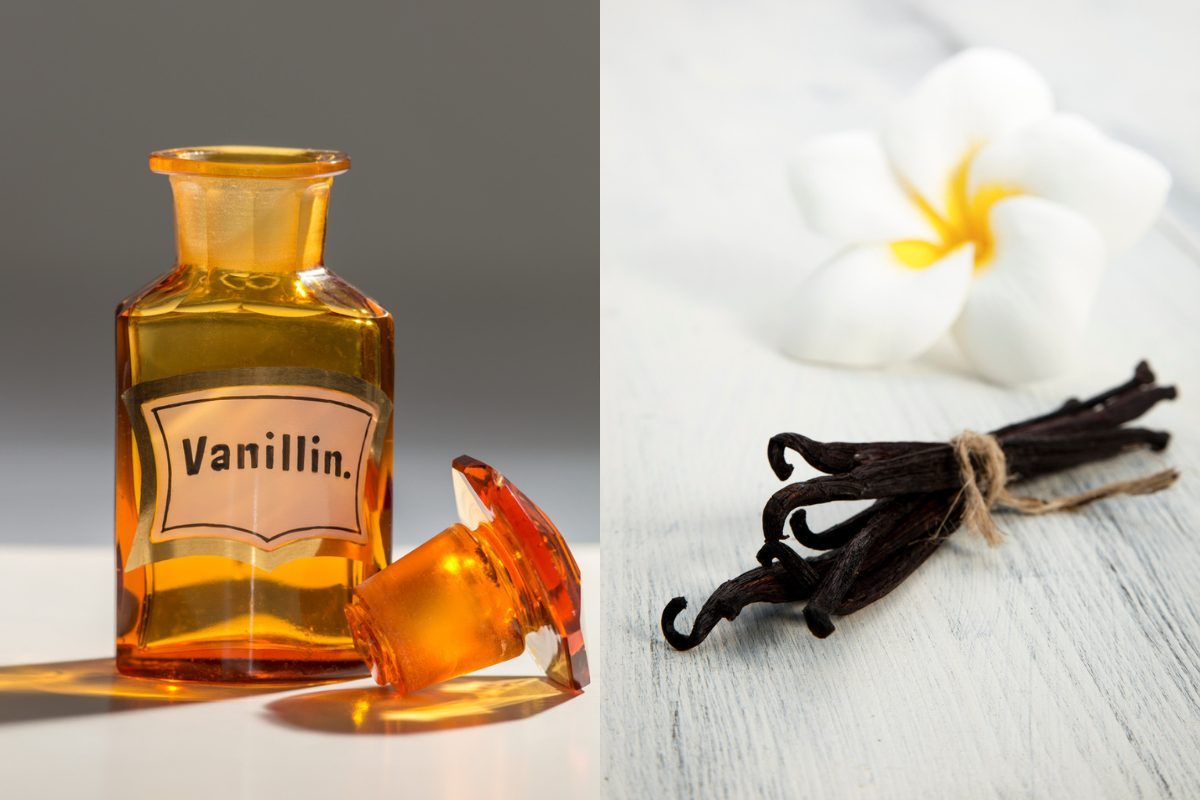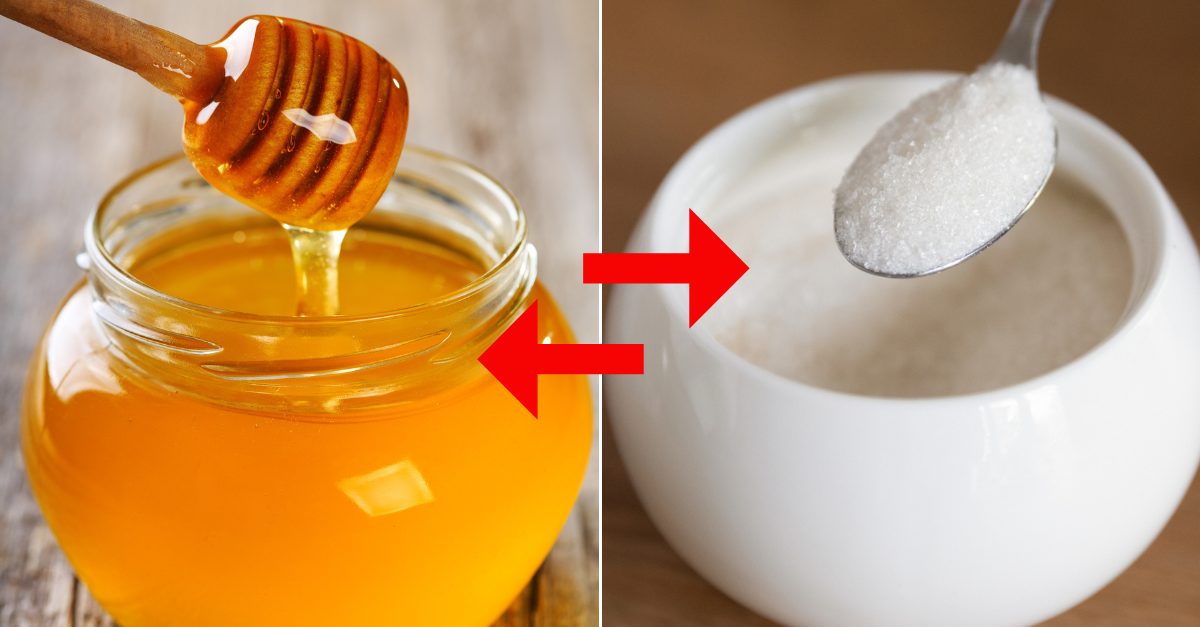2 Major Differences Between Honey And Sugar — And How To Cut Back On All Sweeteners
Honey and sugar are two of the most commonly used sweeteners. Although they perform the same function when added to meals, honey is often regarded as the more healthful option. However, that isn't all that makes these sweeteners different from each other. They have different tastes, textures, and nutritional profiles.
;)
Below, we take an in-depth look at the constituents of honey and sugar which make them similar and also very different.
1. Honey contains less fructose and glucose when compared to sugar but contains more calories

Honey and sugar are both carbohydrates, consisting of the two types of sugar: glucose and fructose. Refined fructose, which is found in sweeteners, is metabolized by the liver and has been associated with: obesity, fatty liver disease, and diabetes.
Both fructose and glucose are broken down quickly by the body and can cause spikes in blood sugar levels. The proportions of glucose and fructose in honey and sugar are different: Sugar is 50 percent fructose and 50 percent glucose. Honey contains 40 percent fructose and 30 percent glucose.
2. Honey is healthier than sugar

The remainder of honey consists of water, pollen, and minerals, including magnesium and potassium. These additional components may be responsible for some of the health benefits of honey.
On the other hand, sugar is higher on the glycemic index (GI) than honey, meaning it raises blood sugar levels more quickly. This is due to its higher fructose content and the absence of trace minerals. But honey has slightly more calories than sugar, although it is sweeter, so less may be required.
Overall, however, it must be noted that both sweeteners can lead to weight gain if overused. Yes, it is possible to consume too much of both honey and sugar. Overconsumption of both can cause weight gain, increased risk of illness, blood sugar peaks and crashes, and increased risk of tooth decay.
Therefore, both products should be used in moderation or not at all. While honey does have some health benefits, they are mostly observed when used in response to specific issues, such as a cough or allergies, or when used topically, which does not affect blood sugar levels. Also, if opting for honey over sugar, choose dark, raw varieties, which contain more nutrients, enzymes, and antioxidants.
Tips for cutting down on sugar and honey intake include:
- Cut portions in half: Use a half spoon of honey or sugar in drinks and on cereals instead of a full spoon.
- Reduce sugar in baking by one-third: This reduces intake without having a big impact on flavor or texture.
- Use extracts or sweet spices: Extracts such as almond or vanilla can provide a sweet flavor to smoothies or baked goods without increasing sugar intake. Ginger, cinnamon, and nutmeg are examples of sweet spices that can add sweetness without calories.
- Substitute unsweetened applesauce or mashed banana: These natural fruit purees can be substituted for sugar in equal amounts in baking and other recipes.
- Satisfy sweet cravings with fruit: Fresh berries, bananas, mango, and other fruits can satisfy a sweet tooth without the need to turn to sugar. Fruit canned in water is also a good choice. Avoid fruit canned in syrup.
- Alternative sweeteners are not recommended to reduce sugar intake. These are known as non-nutritive sweeteners. Examples include aspartame, saccharin, and sucralose. Though the FDA reports these sweeteners are safe to use, recent research reveals they can: increase sugar cravings, cause disruption to gut bacteria, and indirectly affect insulin sensitivity.
;Resize,width=767;)
;Resize,width=712;)
;Resize,width=712;)
;Resize,width=712;)
